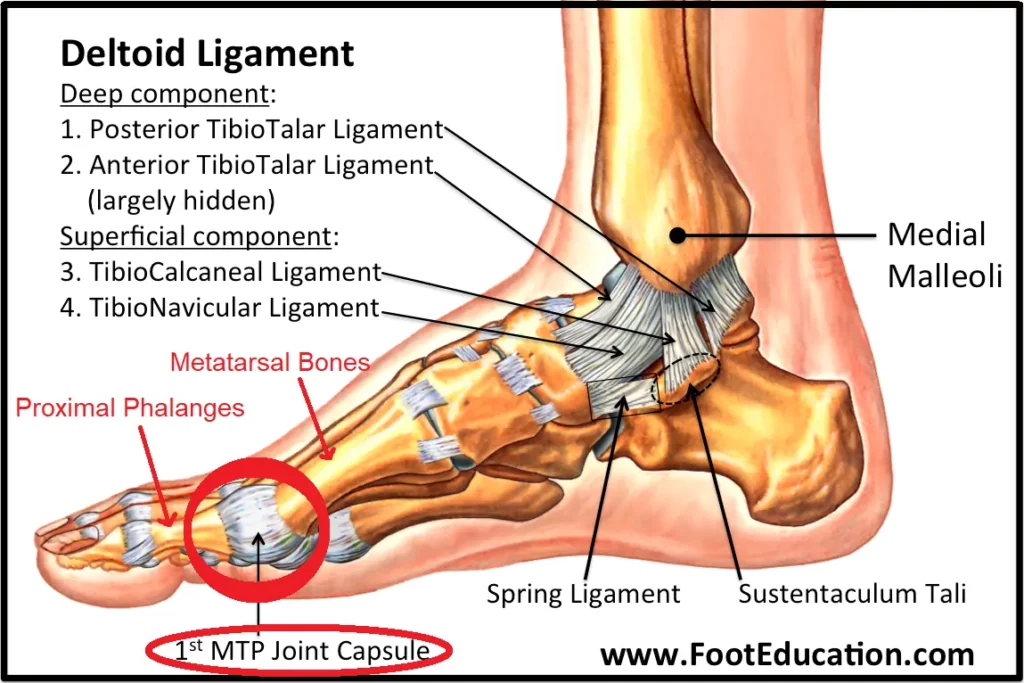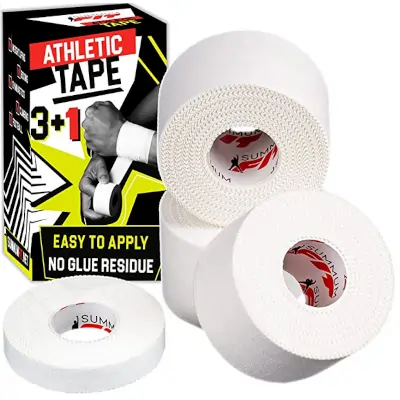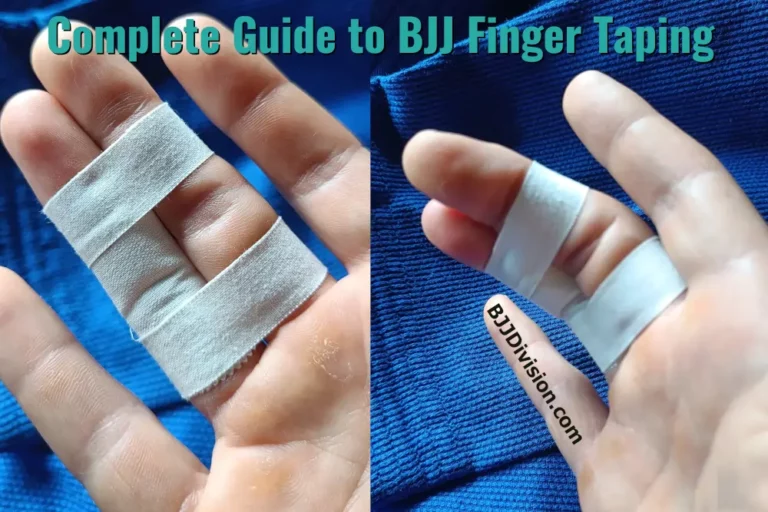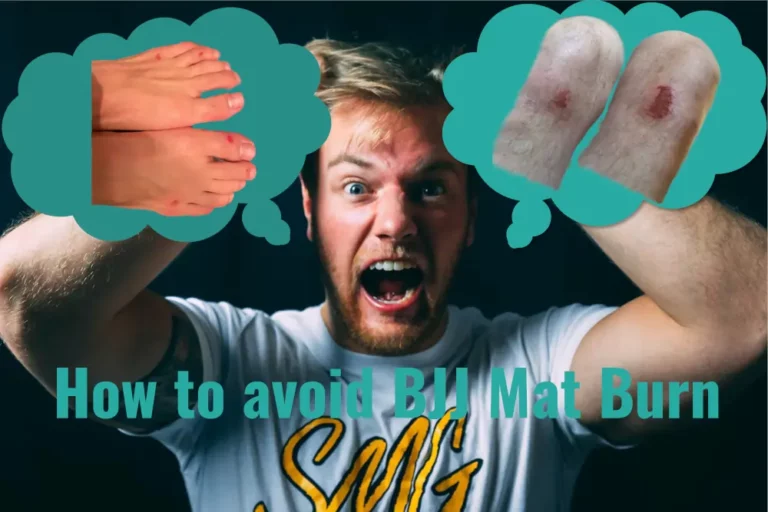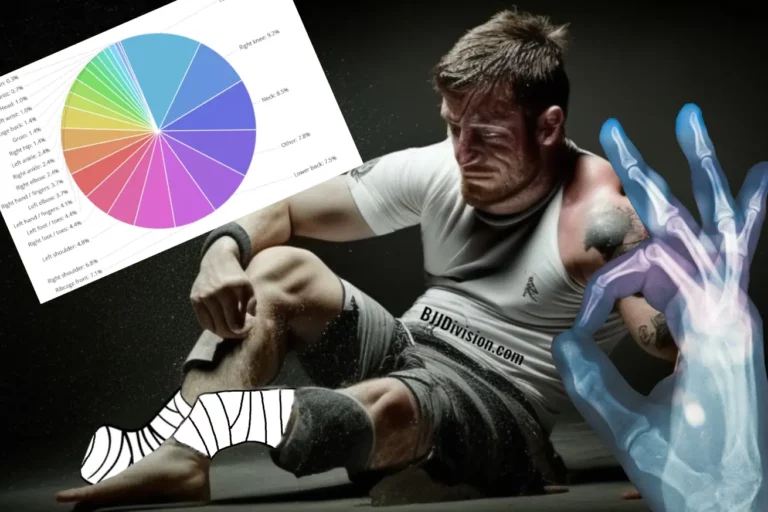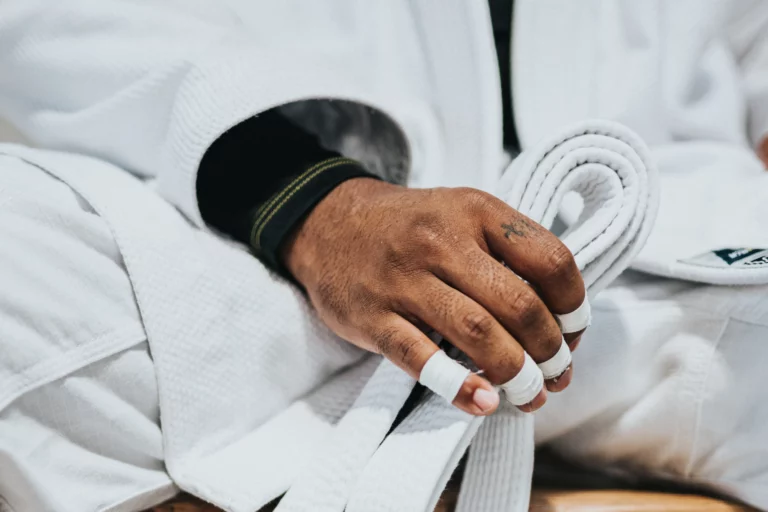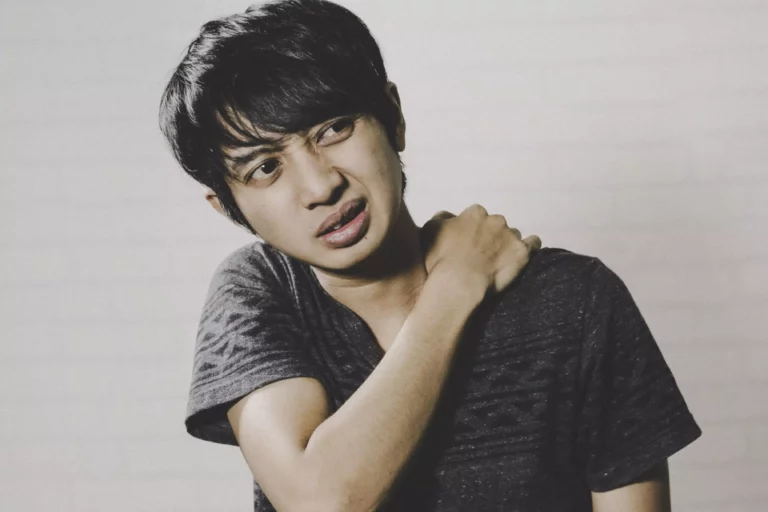BJJ Turf Toe: How to Tape, Treat and Prevent BJJ Toe Injuries
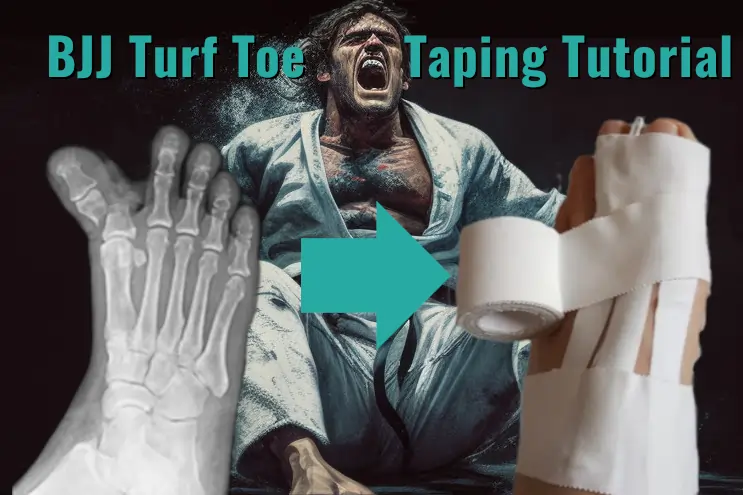
Turf Toe is very common in Brazilian Jiu Jitsu and other grappling sports. Practically everybody practicing Jiu Jitu does damage to their toe joint capsules or the joint itself over time as immense forces are applied to the toe joints and the surrounding tissue. BJJ Turf Toe will negatively impact training and day-to-day life significantly.
Stay tuned if you are struggling with Turf Toe or a related grappling toe injury because we have the remedy. This article provides a battle tested method to tape your toes. We have used it multiple times in training and competition, and it is a life saver. Also check out our guide on finger taping.
Disclaimer: None of the following is medical advice. Make sure to always consult a medical professional.
What to do when you have Turf Toe from BJJ
The competition images below would not have been possible without a sophisticated taping method. I thought I’m out of the tournament before it even started due to a last-minute toe injury. Taping the toe got me through the day without pain and enabled me to collect a few victories back when I was a white belt.
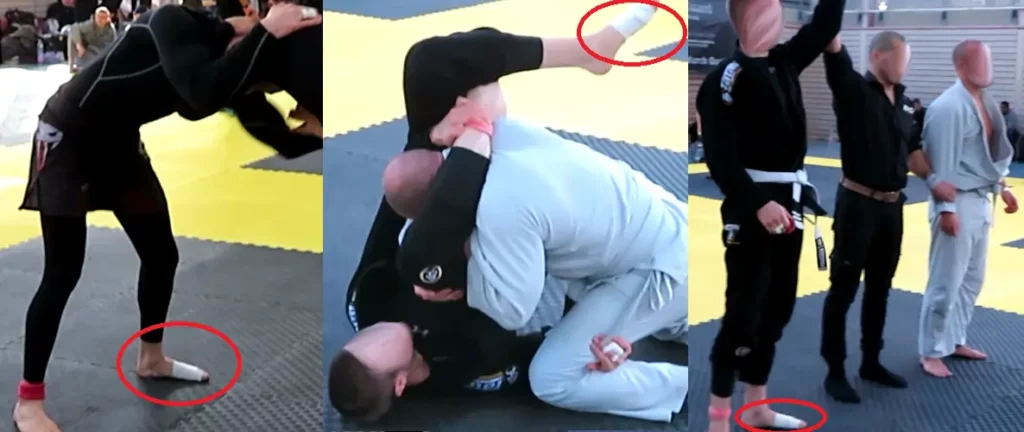
Keep reading to find out what causes Turf Toe as well as how to treat and tape Jiu Jitsu Turf Toe injuries.
What is the Turf Toe BJJ injury?
Turf Toe is an injury to the 1st MTP Joint Capsule, in severe cases to the joint itself. This joint connects the Phalanges to the Metatarsal Bones. Injuries in most cases consist of a damaged capsule.
The affected joint, although small compared to other joints in the body, is a very important one. It enables humans to run, and running is where big forces, equivalent to many times a person’s bodyweight, are applied to the small joint. Therefore, injuring this joint will not only impact training performance negatively but also day-to-day life and longevity.
As a result, you should take good care of this joint and not take injuries lightly as they might impact you for the rest of your life.
The Term Turf Toe stems from wrestling where the injury is even more prevalent as stand-up grappling drives enormous forces through this joint. If you are interested which injuries are most common in Jiu Jitsu, check out our in-depth articles on injury statistics for BJJ and Finger injuries.
How to Diagnose Turf Toe
A few symptoms are very common for Turf Toe injuries:
- Swelling: In most cases the area around the joint will start swelling significantly. Therefore, you should always cool the injured area immediately as swelling can increase pain and prolong the recovery process.
- Haematoma: Depending on the severity of the injury, Haematoma can arise. Minor Haematoma are especially visible in a bend position.
- Stiffness: Swelling and pain usually lead to a feeling of stiffness.
- Sharp pain when bending: Putting weight on the impacted toe as well as bending it into any direction can be very painful. The pain usually feels sharp when the toe is bent to certain degree.
As these symptoms are not unique to Turf Toe injuries, you should always consult a medical professional to exclude other injuries like a broken toe etc.
How to Treat Turf Toe
Treating Turf Toe from BJJ or grappling in general is limited to the basics. Your best bet is the RICE method:
- Rest: Make sure not to damage the ligaments any further as injured ligaments are especially susceptible to further damage.
- Ice: Use icing intervals of about 15 minutes to relief pain and reduce swelling. Don’t directly apply ice to the skin as you may damage the skin.
- Compression: An elastic compression bandage can reduce swelling and support the joint. The bandage should never hinder blood circulation. Be sure not to wrap the injured area too tight.
- Elevation: Swelling can be further minimized be elevating the injured area.
After sufficient recovery time, which must be evaluated individually, you should support the injured joint through taping.
How to Prevent Turf Toe
You can reduce the risk of Turf Toe injuries in Jiu Jitsu by doing the following:
- Focusing on ground fighting: Stand-up fighting is more taxing for the toe joints.
- Moving cautiously: This is not always possible, but you should do your best.
- Taping the injured area: Taping can save the ligaments, capsule and joint from further damage and enable you to keep training.
- Resting sufficiently: Make sure not to reinjure yourself by doing too much too early.
Unfortunately, there is no magic trick to avoid Turf Toe in BJJ. The 1st MTP Joint Capsule is a weak spot when it comes to grappling sports. Keep this in mind and train accordingly as it is all you can do.
How to Tape BJJ Turf Toe
Some joints, like the frontal finger joints are easy to tape and fixate. As a result, you will be able to continue training with only little to no impact on performance and progress. Check out our Jiu Jitsu Finger Taping guide if you need some help. We have one of the best guides out there on finger taping.
Other joints, like the toe or thumb joint further back, are not as easy to tape. It can be a real challenge to continue training with injuries to one of these joints like Turf Toe.
The following method is the only option you have to tape Turf Toe and be able to continue training if the injury is severe.
Our taping method is split into different steps where each step provides additional support. This makes it easy to follow and lets you decide how much support your injured toe needs.
You can either watch our video on Jiu Jitsu Turf Toe Taping or or follow along with this blog post:
Step 1: Sideways Toe Support
First, you need create or get some kind of spacer to put in between the biggest toe and the adjacent toe. We usually use some narrow tap wrapped around itself a few times. If you want to save up your tape, take whatever you can find that seems reasonable.
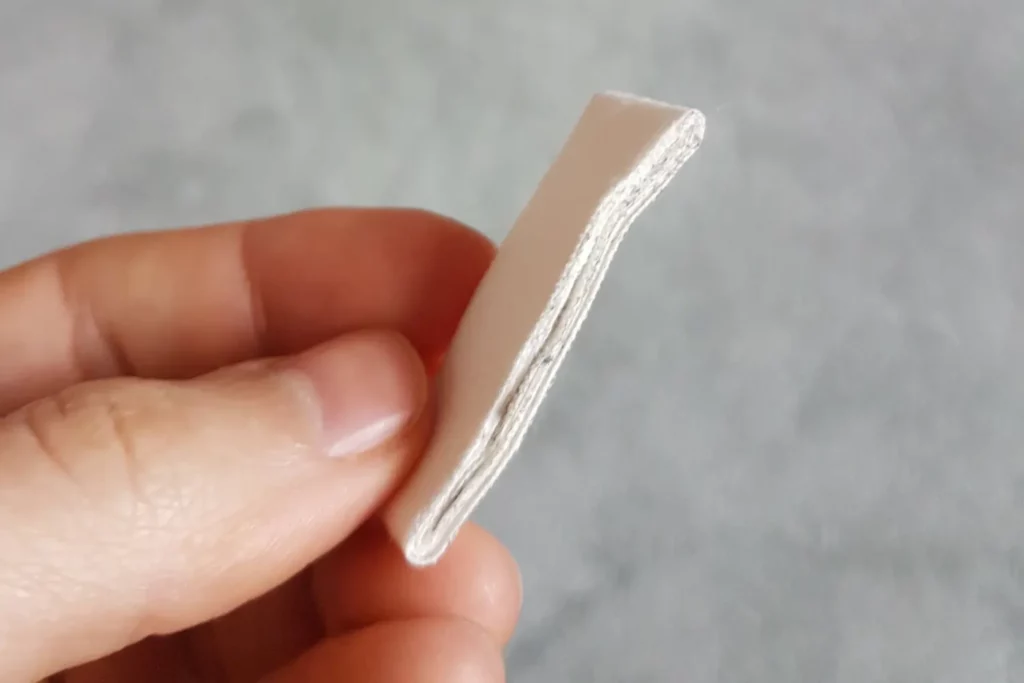
Next, place the spacer between the biggest and second biggest toe and fixate it by wrapping some wide tape around both toes.
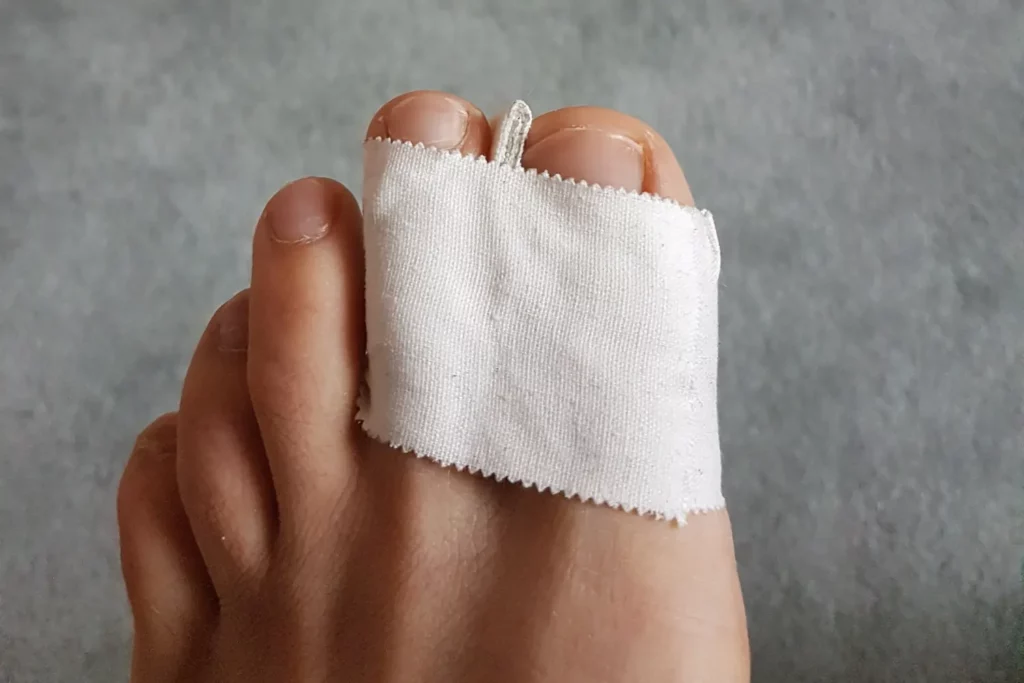
Step 2: Toe Bending Support
In this step we will make sure the toes are supported when they are bent forwards or backwards. Therefore, put some strips of narrow tape on both sides of the foot. Start out on top of the injured toe and go backwards up the foot. Do the same thing on the bottom of the foot. You can flare out the stripes of tape to get support from all directions and cover a lot of skin. The more skin you cover, the better it will hold up.
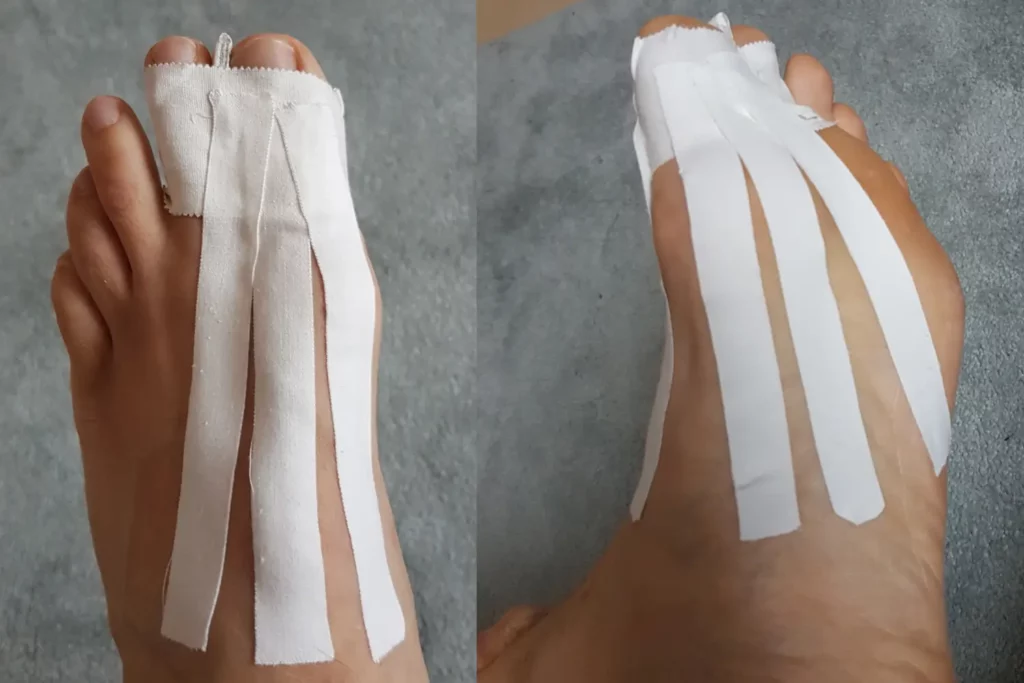
Step 3: Fixation
The basic support structures are already set in place but as grappling is very abrasive, we need to make sure the tape lasts and doesn’t come off. Therefore, wrap a strip of wide tape around the injured toes. Make sure to go around at least on full time as tape sticks much better to tape than to skin. Do the same thing for the other end of the narrow stripes at about mid foot.
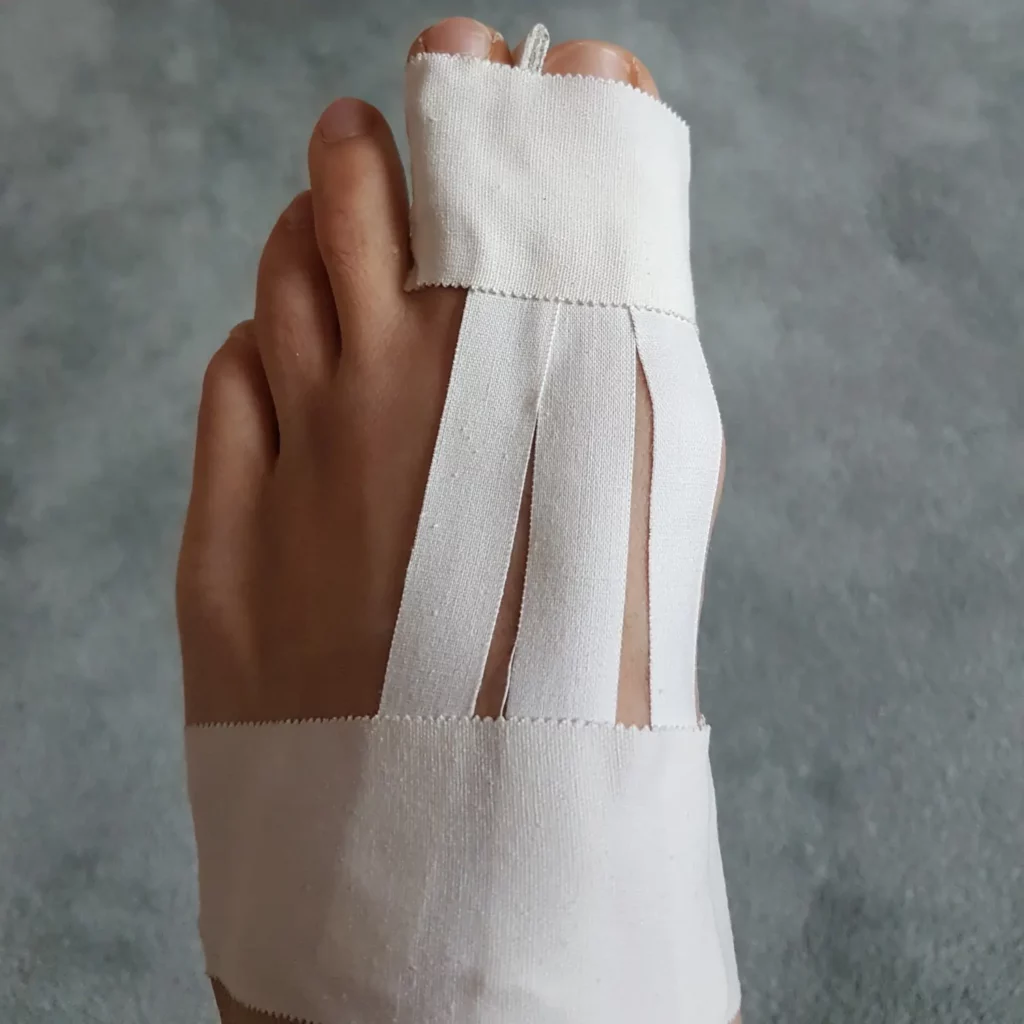
You now have some solid support for your toes. Depending on your needs you can leave it as it is or make it even more supportive and durable. In most cases we recommend doing the full wrap as follows as it is significantly more supportive and durable.
Step 4: Wrapping the Foot
Start wrapping wide tape around the foot starting at the toes going all the way back to about mid foot to seal off all the taping we have done. This will make the whole taping structure solid as you overlap the tape for maximum adherence.
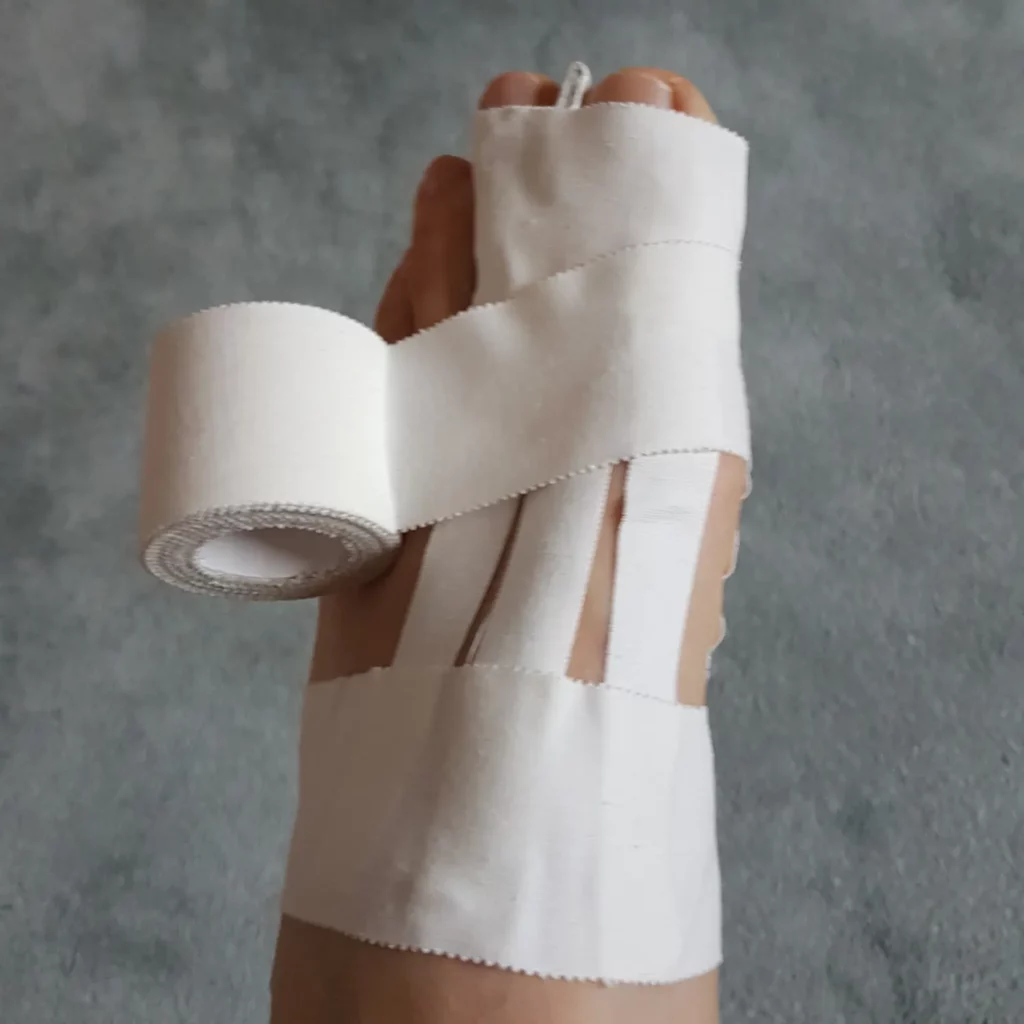
Finally, your foot will look something like the following. Make sure not to wrap your foot too tight. You should not cut off circulation or make it uncomfortable.
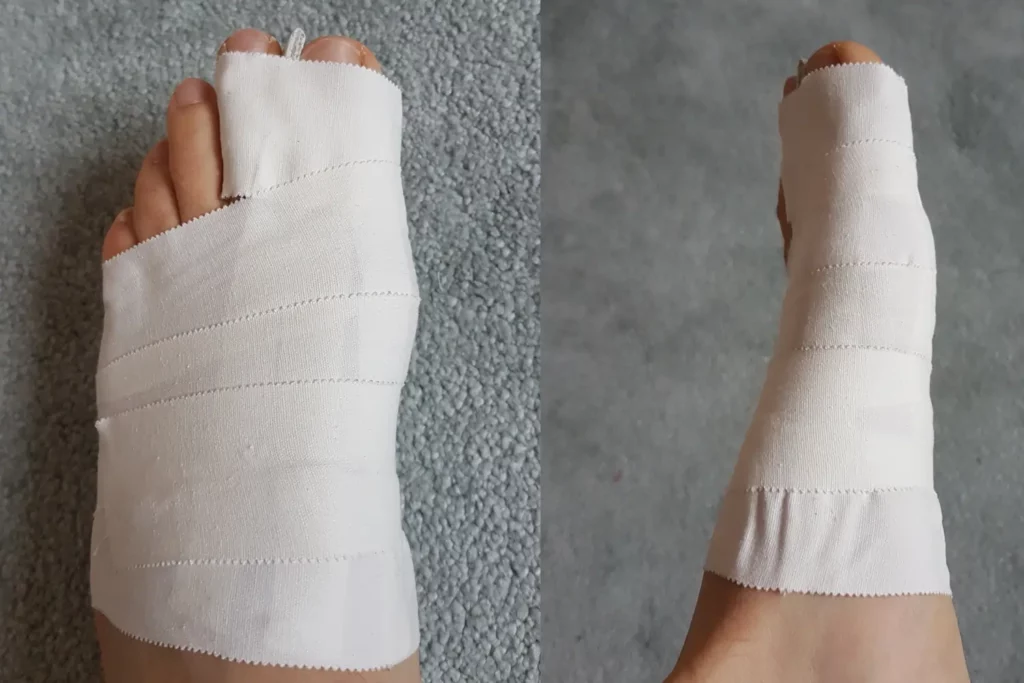
For this taping method you will need quite some tape, but it is worth it as there is no alternative. Get a few rolls of sports tape in bulk, you will need it sooner or later anyway.
What Tape to use for taping Turf Toe
The only thing you need is a regular roll of 2.5″ wide sports tape, but it doesn’t have to be exactly this width.
For the taping method above we used sports tapes of different widths. You can do it the same way and use additional narrow rolls of tape our simply split your wide roll as shown below.
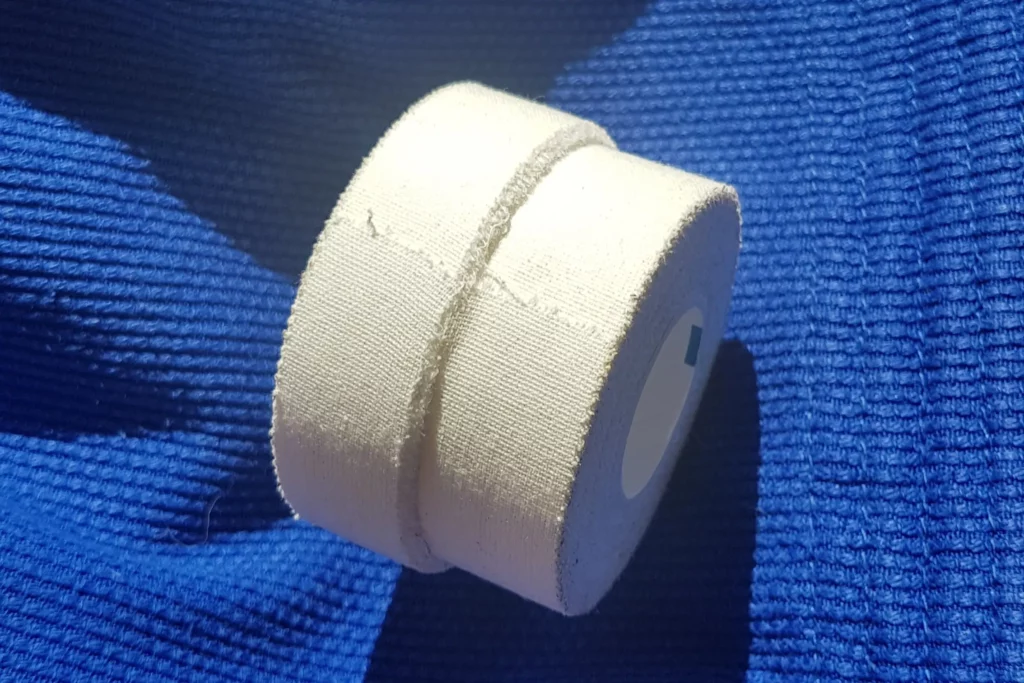
There are no special requirements to the tape. Regular sports tape is sufficient. Try out a few different suppliers if you like but don’t get talked into a specific overprized brand. We usually just get our tape from Amazon. Therefore, just watch out for sports tape that has some good reviews and don’t overthink it. In the end it is just tape, and you won’t spend a fortune.
We got ourselves the following tapes in bulk so it will last for a while, and it works fine:
Conclusion
Turf Toe from BJJ is a serious injury. If not treated properly it can negatively impact day-to-day-life significantly. You should rest the injured are sufficiently before putting it to the test again.
We provided you with the only viable taping method for BJJ Turf Toe. The tape will give your toes and joints some stability and protection. Hopefully you will have a speedy recovery and will be back on the mats in no time.

